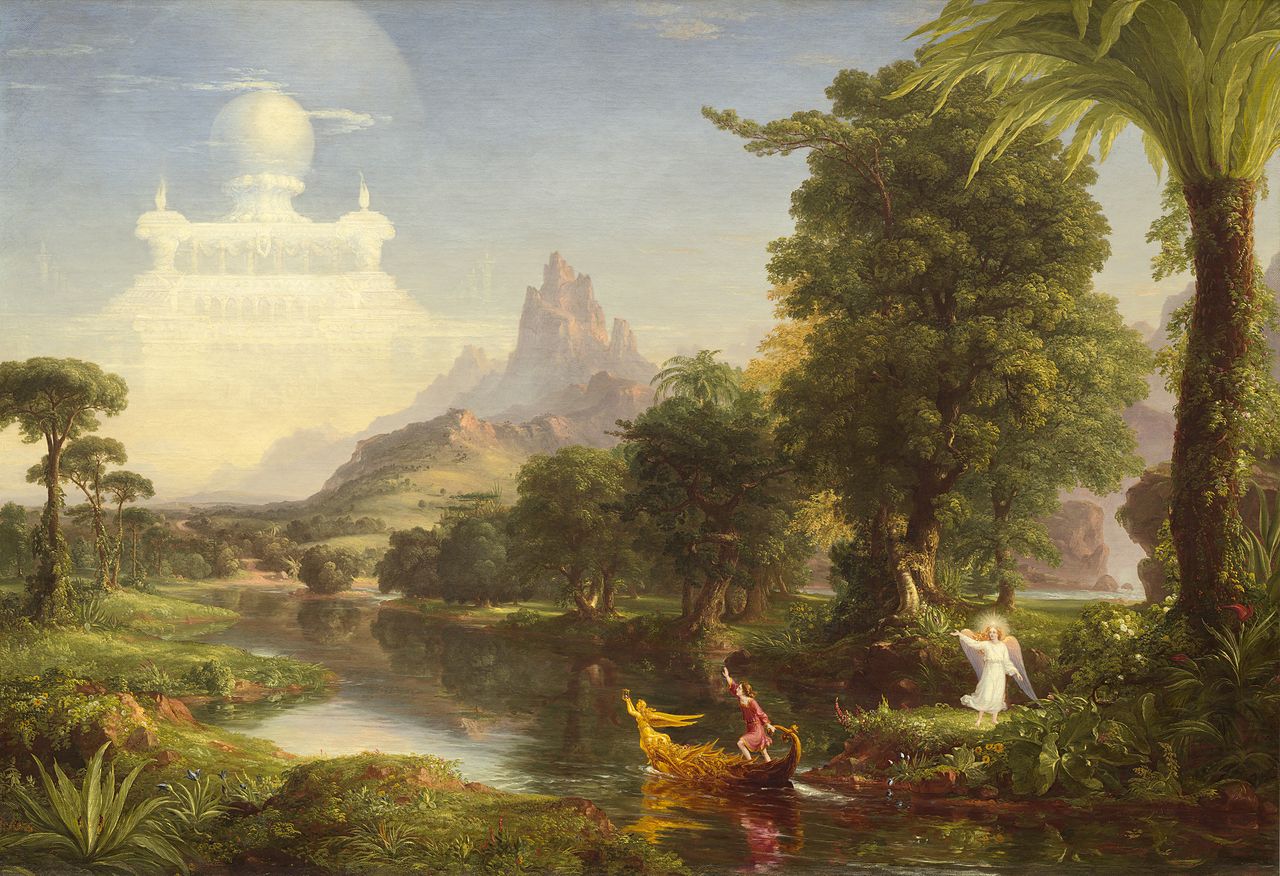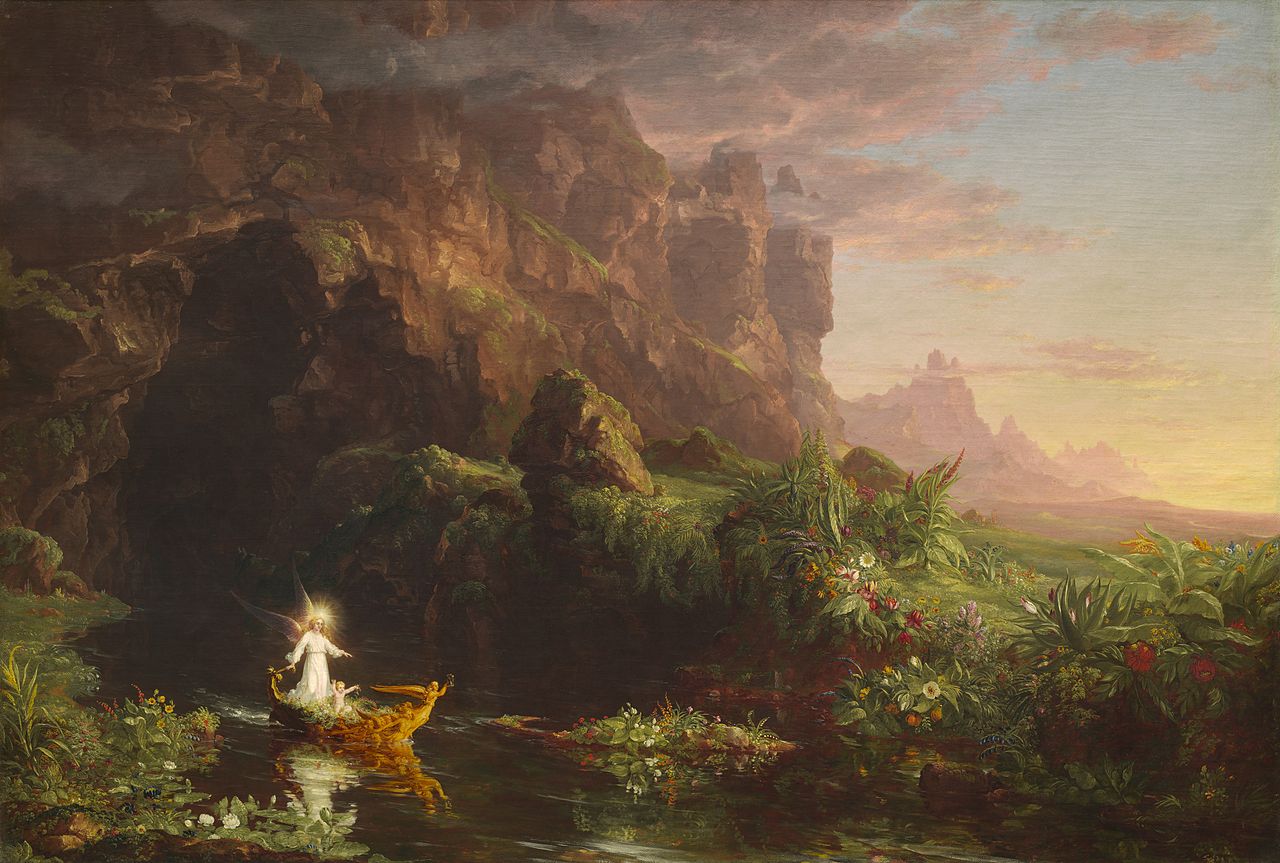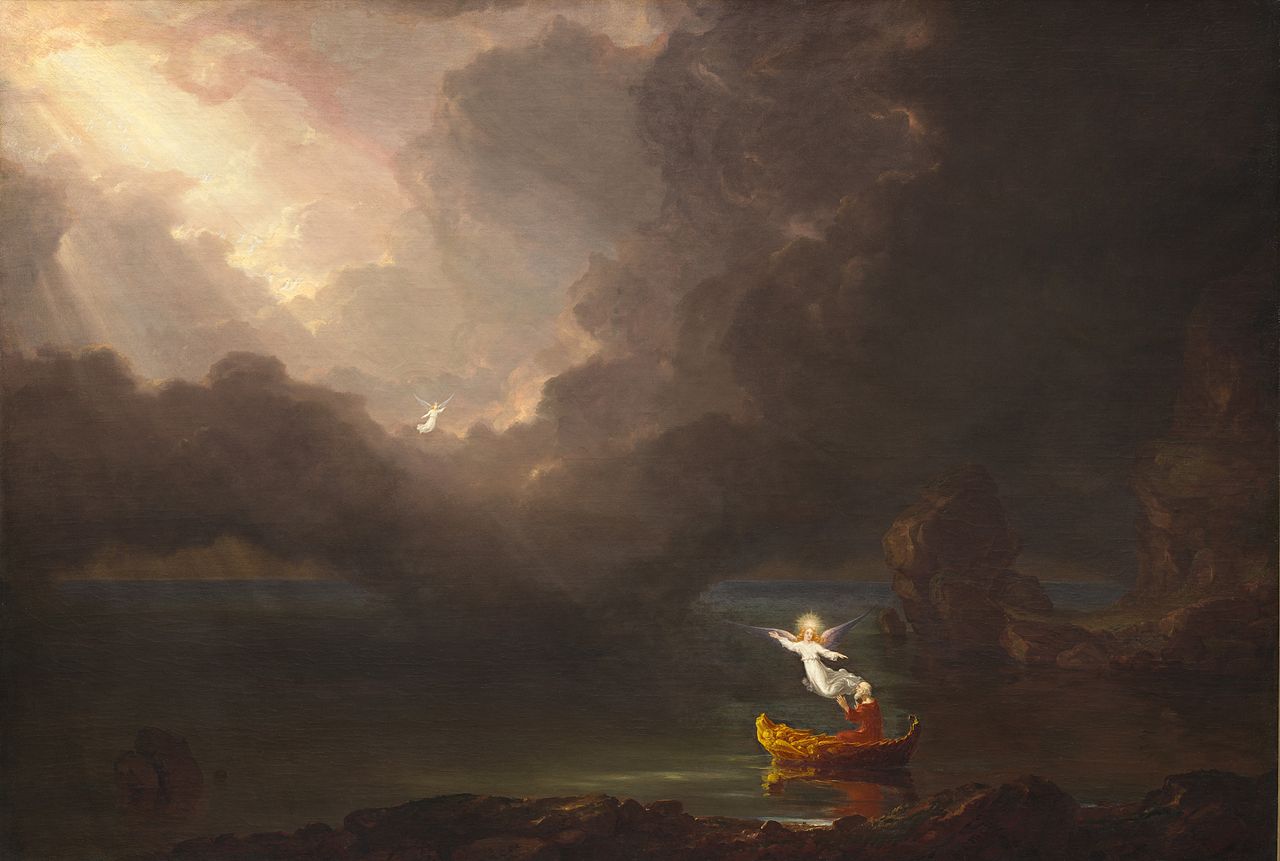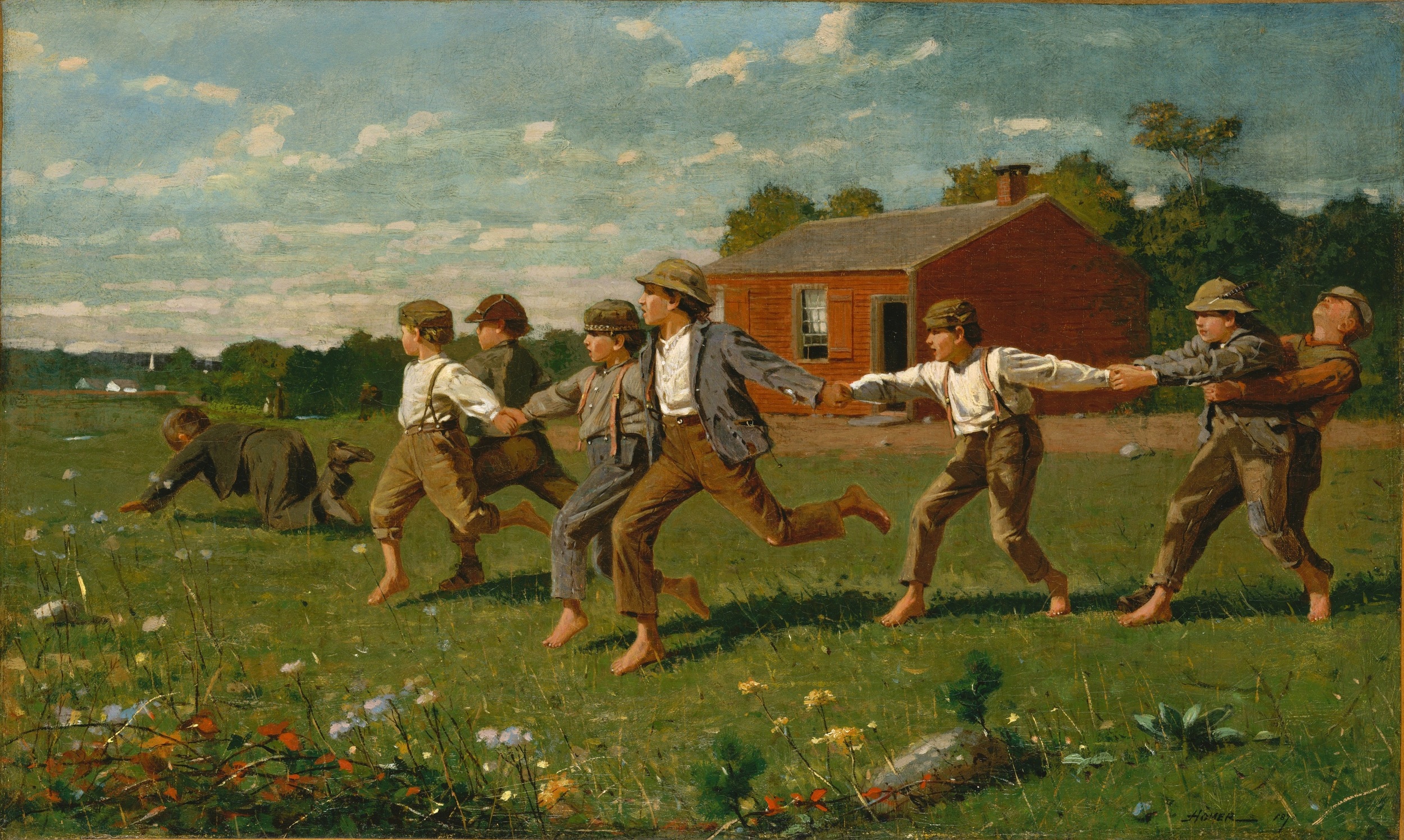Depictions of Youth
Yondering’s focus on youthful idealism prompted an examination of how this theme might be depicted in art. About the time Stephen Foster was writing his songs, Thomas Cole was painting vistas of North America as one of a group of painters known as the Hudson River Valley School. By examining Cole’s 1842 series The Voyage of Life, Grade XI Visual Art students were introduced to a nineteenth century Romantic depiction of youth and were asked to create a response based on personal experience.
Note: All Thomas Cole images are public domain and courtesy of Wikimedia Commons.




Students were asked to place the images in order and then choose names for each of the four stages of life. Cole’s titles: Childhood, Youth, Manhood and Old Age, were debated in light of present-day values and it was decided that adulthood seemed particularly daunting in Cole’s day! Many details were discovered in these meticulously painted images that gave clues to the narrative, such as the hourglass held by the figurehead on the boat’s prow, and angry faces emerging from the clouds. Students quickly recognized the allegory of life as a journey down a river and noted the evolving relationship of the protagonist and the angel. It was observed that the second painting, Youth, felt central to the series because as the river rounds the bend, the rapids, the cliffs and the open sea beyond the screen of trees predict the settings of the final paintings.
In Youth, students saw the dramatic gesture of the figure reaching for a dream, represented by a castle in the sky, as a young person’s idealised vision of the future. Students were then asked to create a visual representation of their own personal relationship to the future, including:
- Oneself
- A path
- Any obstacles/supports
- A dream
Some acknowledgement of the visual language of Romanticism, central to Cole’s work, was also a requirement of the assignment. We made a list of the possibilities:
- Sense of the sublime created by the contrast of tiny figures set in a vast landscape
- Rich colour and textures to draw us into the viewing experience
- Idealism
- Supernatural elements
We have a few examples of the work that the students created:
The Clothes Make the Children
The costumes and playful movements of the dancers in Yondering are reminiscent of an active group of children depicted in another well-known American painting, Winslow Homer’s Snap the Whip of 1872. This comparison afforded another opportunity for an exercise in visual comparison, this time with the ballet itself.


We asked the questions:
- Who are they? How old are they? What are they doing?
- Do you see any parallels between this painting and the ballet? Any differences?
In both works the boys are wearing simple clothes; trousers, with suspenders to secure them. In the painting the boys are barefoot which suggests that they are not wealthy, while in the ballet they are shirtless, perhaps for the same reason. Hats provide protection from the sun in the painting; they have a more military feel in the ballet. After referring to the Metropolitan Museum of Art’s website, students found that the lack of shoes in Homer’s painting likely also refers to a sense of freedom while suspenders are more grown up and a reminder of duty. It is therefore possible that Homer’s group of boys, co-ordinating their movements in a game of snap-the-whip, represent the post-Civil War union. This sort of social commentary is consistent with the concerns of other Realist painters of the late nineteenth century studied in Grade XI History of Art. Is this the case in the ballet as well, or is it a more straight-forward depiction of a moment between childhood and adulthood?
Click here to read more about Snap the Whip.
Click here to read more about Yondering costumes.
